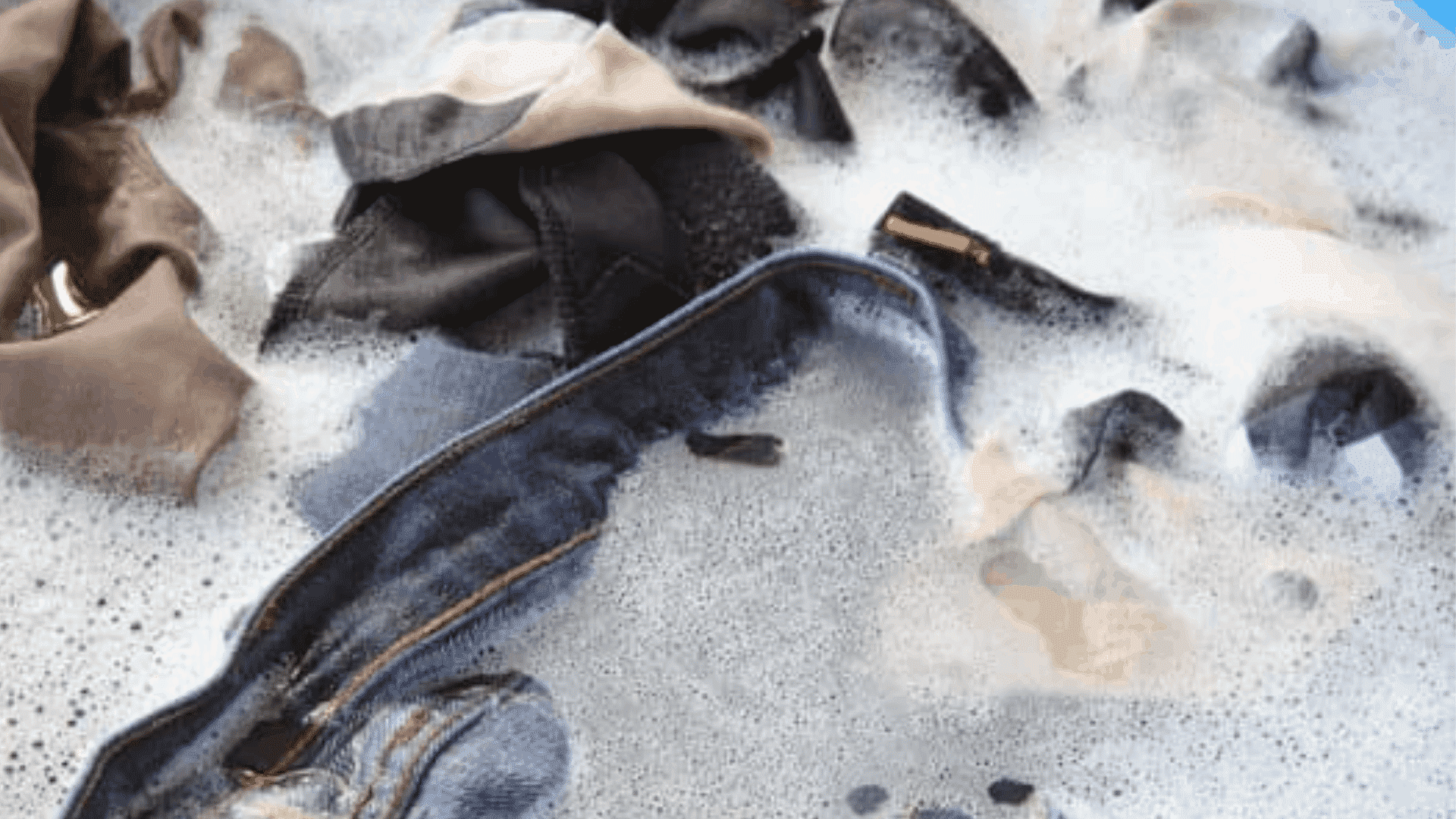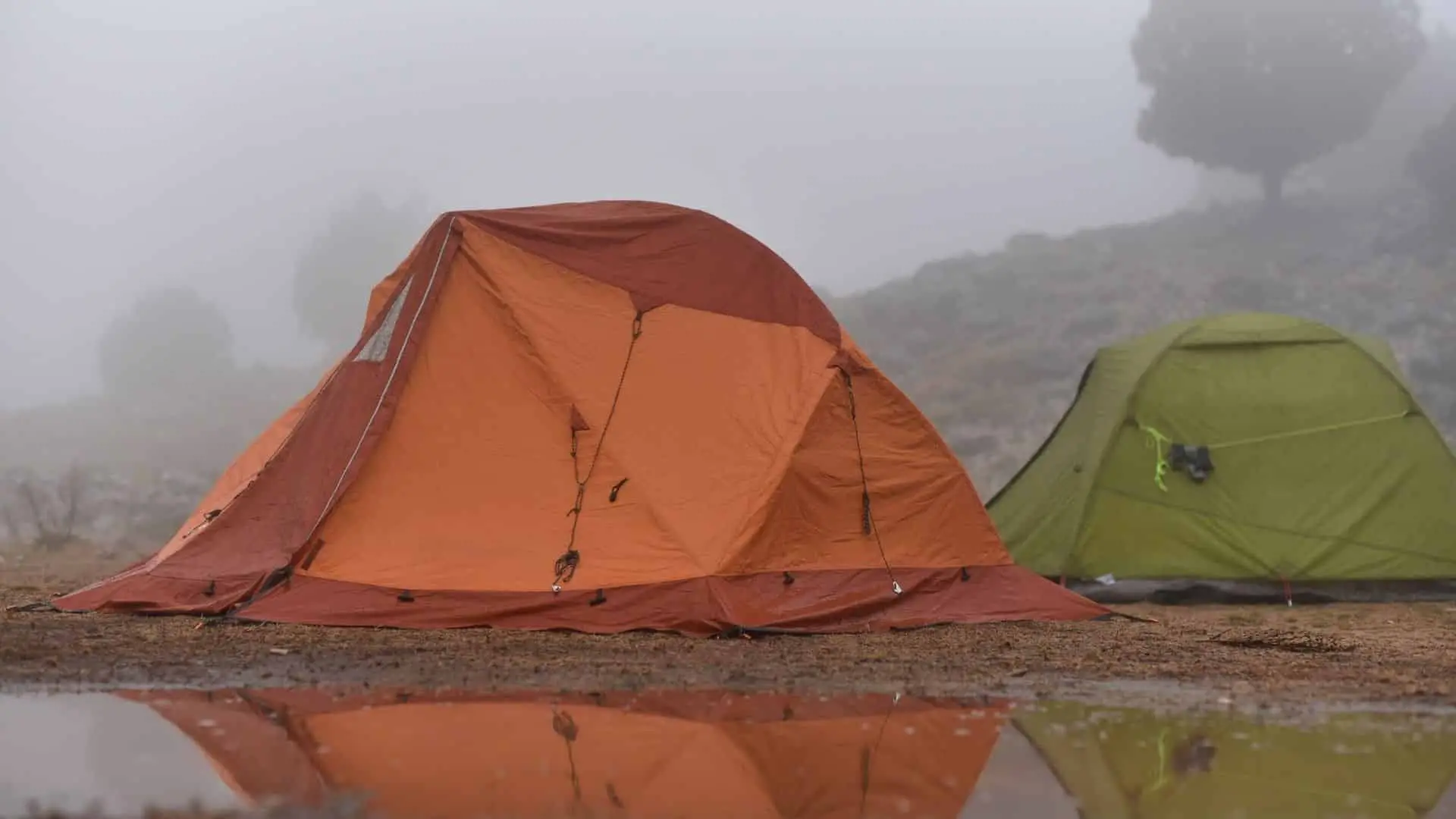Keeping your pack light on long backpacking trips is a serious challenge. There’s a fine line between reducing weight and being unprepared. Reducing your clothing load is one of the easiest ways to reduce pack weight.
Table Of Contents
Doing Laundry on The Trail
If you’re only going to be on the trail for a few days you probably won’t need to do laundry on the trail. You can usually get by without washing your clothes for a few days. But if you’re planning on a longer hike you should probably find a way to clean out your clothes.
What Type of Fabric is Easiest to Clean on The Trail?
Cleaning your clothes isn’t the problem, just about any shirt can be cleaned on the trail. Finding a way to dry your clothes without a dryer is the real problem.
Obviously, certain fabrics will be easier to care for than others. Look for synthetic fabrics labeled as moisture-wicking or fast drying. Go for lightweight fabrics like polyester, spandex, and nylon (avoid cotton).
You’re looking for clothes that will naturally dry when set out in the sun for a few hours. It shouldn’t take longer than 1-2 hours for synthetic clothes to fully dry.
If you’re only carrying 100% synthetic fiber clothes you shouldn’t have a problem drying them. Go with 100% polyester base layer t-shirts, nylon hiking shorts, and synthetic/wool blend socks.
Merino wool is another great option. Wool dries fast and it actually keeps you warm when wet. Plus it has antimicrobial properties so it won’t stink when wet and sweaty.
When Should I Change My Clothes?
Nobody wants to be the smelly guy on the trail. Maintaining good trail hygiene means bringing enough clothing and knowing when to clean it. You can’t just keep on wearing the same old sweaty clothing.
After a long day on the trail, you should definitely change your clothing. Once you get to camp each night you’ll want to swap out your sweaty shirt, pants/shorts. You might want to wait until you take a trail shower to change your socks and underwear.
On extremely hot days you might not want to change your clothes right as you get to camp. You don’t want to get all sweaty before hopping into your sleeping bag. Before heading to bed make sure you change into clean and dry clothing.
Wearing dirty clothing to bed is gonna make your sleeping bag nasty fast. Plus you might end up with rashes, chafing and other skin problems. Definitely get a sleeping bag liner (On Amazon) to protect your bag from sweat and dirt.
Try Rotating Outfits on Long Trips
On longer trips, you can’t bring a fresh set of clothes for each day. Try rotating out your outfits and cleaning them as you go. At the end of the day take off your dirty clothes and try to clean them.
Continue reading below for more info on washing your clothes on the trail.
It’s all about making sure your clothes are dry before you need to wear them again. Bring along 2-3 days worth of extra clothes (shirts, socks, underwear) so you have enough time for the next clothing transition. You shouldn’t need a change of pants/shorts, jackets, etc(stick to the base layers).
Do yourself a favor and bring extra pairs of socks and underwear. Unless you’re really trying to cut pack weight you can usually find room for extra pairs of socks and underwear.
Washing Your Clothes on The Trail
If you’ll be on the trail for a few days you will probably need to wash your clothes. Washing your clothes on the trail really isn’t all that difficult.
Don’t Wash Clothes in Streams, Rivers, Lakes, ETC
Even with biodegradable soaps and detergents, you shouldn’t wash your clothes in streams and lakes. This is especially true in small bodies of water. In small stagnant bodies of water, you soaps are going to kill small water-borne organisms.
If you really want to use a water source to clean off your clothes just hop on in to rinse them off without soap. This is especially nice on a hot summer day. It’s just enough to wash the sweat out of your clothing.
Everything You’ll Need
- Waterproof Bag: Most people use gallon-sized Ziplocs, but I prefer small dry bags (On Amazon). I’ve found that dry bags are much easier to use. Go with a black bag that can heat up in the sun.
- Laundry Detergent (Biodegradable?): Experts typically recommend only using biodegradable soaps like Campsuds (On Amazon) and Dr Bronners (On Amazon). But real for a minute, Dr. B’s and Campsuds can only go so far. Using a few drops of regular laundry detergent goes way farther than biodegradable soaps and the break down rather quickly in small amounts. If you stay away from water sources it shouldn’t be much of a problem.
How to Wash Clothes on Backpacking and Camping Trips
- Fill up your waterproof bag with water. Warm water usually works better than cold (just set your bag out in the sun for a few hours).
- Add clothes to your bags and a little bit of detergent. Be careful when adding detergent, because if you use too much you’ll never get it out. Make sure you leave enough room in the bag to shuffle everything around.
- Think about how the agitator on your washing machine works. Rub your clothes together using friction to get off all the dirt. If your bag is too full you won’t be able to shuffle everything around.
- Just like a laundry machine, you’ll want to shake up the bag for five to ten minutes. Make sure the bag is closed up tight so you don’t end up getting soaked.
- Dispose of all the used water 200 ft away from the closest water source.
- Wring out all your clothes and refill the bag with clean water and shake out your bag. This is basically the rinse cycle in your washing machine.
- Once all the suds are gone wring the clothes out and hang them up to dry.
Put Your Clothes Back On After Washing
If your clothes are 100% synthetic you shouldn’t have a problem drying them. With a synthetic T-Shirt and Nylon shorts you can put them back on after washing them.
It shouldn’t take more than a few minutes to dry the clothes. The waistband and pockets might be a little wet, but it shouldn’t be bad. Try to find hiking clothes with fewer pockets, fewer layers and thin seams that will dry fast.
Don’t try this with socks and underwear. They are a completely different matter. Synthetic blend socks are thick, slow drying and won’t dry in your boots. To Dry socks, you’ll need to hang them up and line dry them. Hopefully, you can get a few hours of sunlight in, but they’ll usually dry overnight.
With slightly wet socks you can usually place them in your sleeping bag and they’ll be dry by morning. Although I wouldn’t usually choose this method for drying socks, it usually works.
Other Tips To Wash Hiking Clothes on The Trail
Where you need to wash your clothes depends on where you’re staying. Just try to stay at least 200 ft away from water sources. If you’re staying for a few days you might want to do laundry away from camp.
You don’t want to attract wildlife to your campsite by using scented soaps. It’s all about spreading out the residue to avoid impacting one area.
Using a waterproof washbag is by far the easiest method to wash clothes on the trail. There are a few different ways to wash clothes, but the method above is my favorite.
You can’t wash clothes without choosing a soap. If you’re in a crowded campground or you’ll be in the same place for a while definitely go with biodegradable soaps. I really like Dr Bronners (On Amazon) and Campsuds Soap (On Amazon). Just try to spread out the soap because even bio-friendly soaps can contaminate a water supply.
Be serious for a minute. A few drops of laundry detergent isn’t that big of a deal out in the backcountry. Even the most powerful laundry detergent will break down in the soil after a few days. Doing a little laundry with regular detergent doesn’t make you an environmental terrorist.
Drying clothes is somewhat challenging without access to a dryer. Although there are a few different ways to dry clothes on the trail, the only surefire method is time. Start washing your clothes early so they have enough time to dry. It’s all about starting early so you’ll have the maximum dry time.
With synthetic clothes, you can typically just toss the shirt back on and it will be dry in 20-30 minutes. On colder days you’ll have to hang up the clothes to dry.



